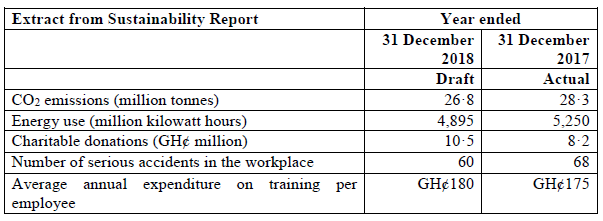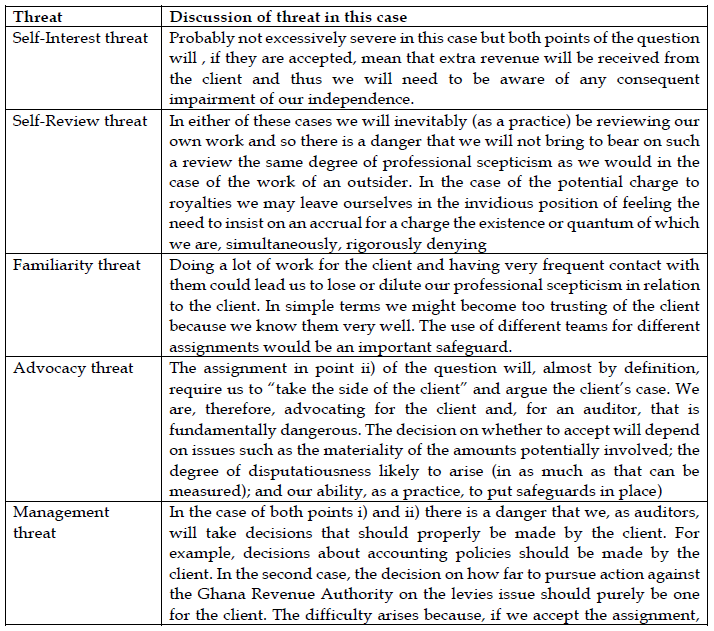May 2020 Q3 a.
GGC Co. Ltd (GGCL) specialises in manufacturing equipment which can help to reduce toxic emissions in the production of chemicals. The company has grown rapidly over the past eight years and this is partly due to the warranties that the company gives to its customers. It guarantees its products for five years and if problems arise during this period, it undertakes to fix them or provide a replacement.
You are the manager responsible for the audit of GGCL and you are performing the final review stage of the audit and have come across the following issues.
Receivable balance owing from Nhyira Co. Ltd
GGCL has a material receivable balance owed by its customer, Nhyira Co. Ltd. During the year-end audit, your team reviewed the ageing of this balance and found that no payments had been received from Nhyira Co. Ltd for over six months. GGCL would not allow this balance to be circularised. Instead management has assured your team that they will provide a written representation confirming that the balance is recoverable.
Warranty provision
The warranty provision included within the statement of financial position is material. The audit team has performed testing over the calculations and assumptions which are consistent with prior years. The team has requested a written representation from management confirming that the basis and amount of the provision are reasonable. Management is yet to confirm acceptance of this representation.
Required:
a) Describe the audit procedures required in respect of accounting estimates. (8 marks)
View Solution
Procedures the auditor should adopt in respect of auditing accounting estimates include:
- Enquire of management how the accounting estimate is made and the data on which it is based.
- Determine whether events occurring up to the date of the auditor’s report (after the reporting period) provide audit evidence regarding the accounting estimate.
- Review the method of measurement used and assess the reasonableness of assumptions made.
- Test the operating effectiveness of the controls over how management made the accounting estimate.
- Develop an expectation of the possible estimate (point estimate) or a range of amounts to evaluate management’s estimate.
- Review the judgments and decisions made by management in the making of accounting estimates to identify whether there are indicators of possible management bias.
- Evaluate overall whether the accounting estimates in the financial statements are either reasonable or misstated.
- Obtain sufficient appropriate audit evidence about whether the disclosures in the financial statements related to accounting estimates and estimation uncertainty are reasonable.
- Obtain written representations from management and, where appropriate, those charged with governance whether they believe significant assumptions used in making accounting estimates are reasonable. (Any 8 points @ 1 mark each = 8 marks)



